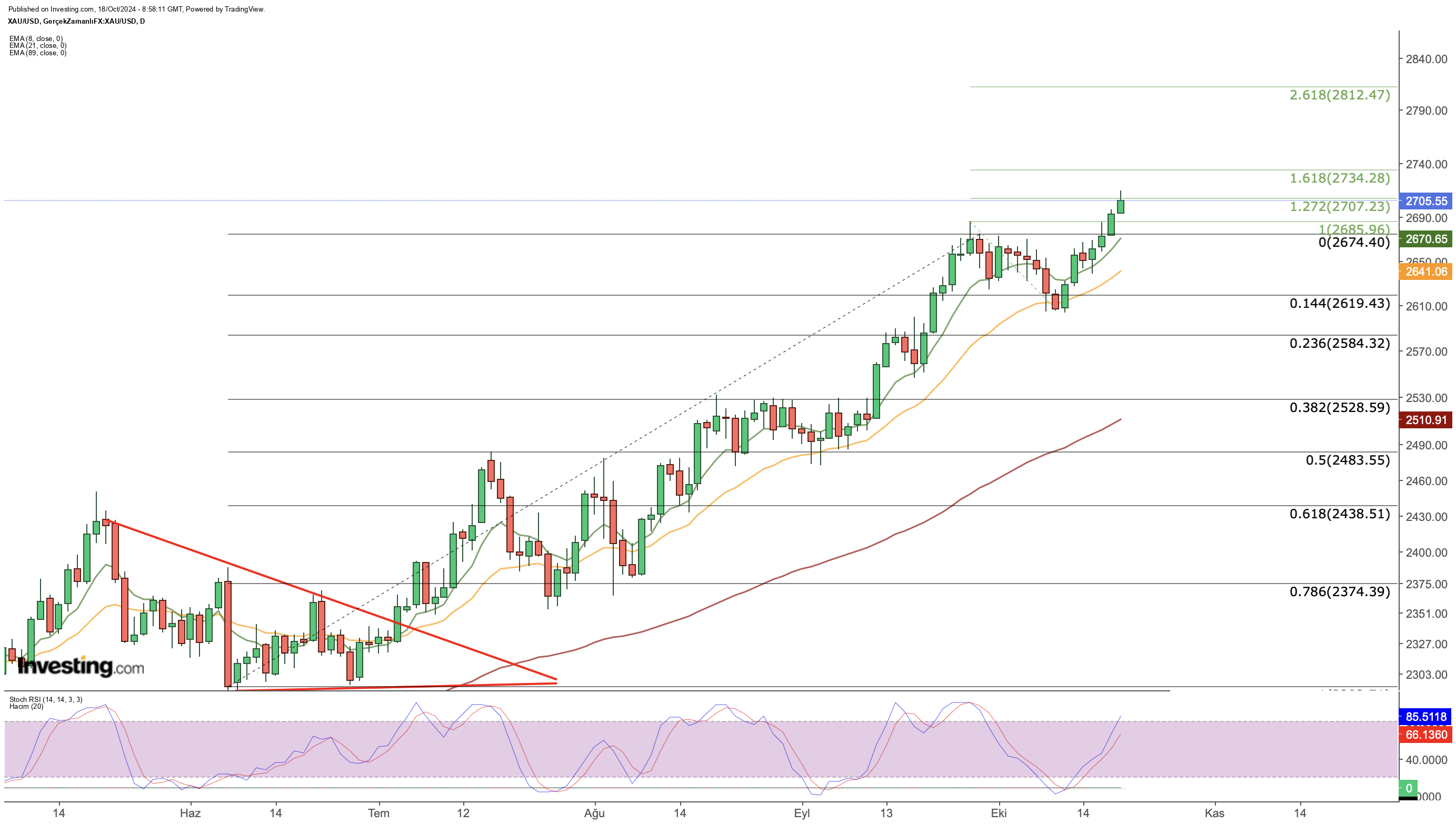Stifel maintains Buy rating on Contineum Therapeutics stock despite MS trial failure
- Gold has zoomed past $2,700, currently settling near $2,727 at writing.
- Rising uncertainties amplify gold's safe-haven appeal, despite strong U.S. economic data.
- Traders should closely watch key support and resistance levels for clues on the next move.
- Looking for actionable trade ideas to navigate the current market volatility? Unlock access to InvestingPro’s AI-selected stock winners for under $9 a month!
Gold is soaring above $2,700, propelled by escalating geopolitical risks and interest rate cuts from major central banks.
With rising tensions in the Middle East and a climate of global uncertainty, investors are flocking to gold as a safe haven asset, pushing its value to historic highs despite strong data coming in from the US.
Gold Shows Resilience Amid Strong U.S. Data
Although geopolitical tensions typically boost gold, this week’s escalation has overshadowed other influences, including strong U.S. economic data.

Normally, robust economic indicators would pressure gold prices by supporting the dollar. The DXY index recently climbed 3.5%, stabilizing around the 103 level.
This environment gives the Federal Reserve leeway to slow its rate-cutting cycle, which historically weighs on gold prices. However, the persistent fears surrounding the conflict's escalation have kept gold resilient despite strong economic data.
What's Overshadowing the Strong US Data and Greenback?
- Geopolitical Developments
This week, the gold market is closely monitoring the escalating conflict between Israel and Hamas.
The situation intensified after Israel confirmed the killing of Hamas leader Yahya Sinwar, sparking speculation about potential Israeli strikes on critical infrastructure in Iran, including oil and nuclear facilities.
While Israel's statements about targeting military sites briefly calmed the markets, the underlying tension continues to drive gold’s appeal. In response to these developments, gold reached a record high of $2,714.
- Global Economic Uncertainty and Use in AI Chips
Economic uncertainties in other developed countries further bolster gold demand. The European Central Bank (ECB) recently cut rates for the third time this year, reducing its deposit rate to 3.25% to manage inflation.
This move, coupled with China’s stimulus measures, is driving investors toward safe assets like gold. Additionally, the uncertainty surrounding the upcoming U.S. elections contributes to a cautious market mood.
The World Gold Council reports that central banks have ramped up gold purchases by 6% this year, totaling 183 tons. Moreover, the burgeoning artificial intelligence sector has spurred an 11% annual increase in gold's use in technology.
Technical View: Gold Could Eye Higher Levels
From a technical standpoint, gold recently experienced a minor correction within its broader uptrend. Following profit-taking at the $2,685 level in early October, gold dipped to $2,605 but has since reversed course amid rising geopolitical risks.

Current projections suggest upward targets of $2,735 and $2,810, provided gold can close above $2,707 on a daily basis. Traders should monitor the $2,685-$2,785 range closely as a potential support zone if profit-taking occurs.
In summary, gold is navigating a complex landscape shaped by geopolitical risks and central banks' expansive monetary policies amid a strengthening dollar.
This week, the balance has tilted upward due to increased uncertainties, but traders should remain vigilant, as short-term support and resistance levels will be crucial in the fast-changing environment.
***
Disclaimer: This article is written for informational purposes only; it does not constitute a solicitation, offer, advice, counsel or recommendation to invest as such it is not intended to incentivize the purchase of assets in any way. I would like to remind you that any type of asset, is evaluated from multiple perspectives and is highly risky and therefore, any investment decision and the associated risk remains with the investor.
